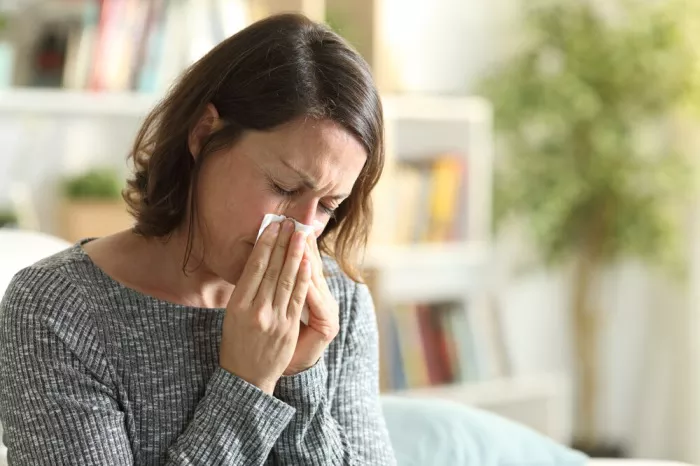Allergies are a common condition that affect millions of people around the world. They occur when the immune system overreacts to a substance that is normally harmless, such as pollen or food. In this article, we will explore the signs of allergies, how they can be diagnosed, and what treatments are available to manage them.
What are Allergies?
Allergies occur when the immune system overreacts to a substance that is normally harmless, such as pollen, dust mites, or certain foods. When someone with an allergy comes into contact with the allergen, their immune system produces an allergic reaction, which can range from mild to severe.
Common types of allergies include seasonal allergies (such as hay fever), food allergies, and skin allergies (such as eczema). While allergies can be uncomfortable and inconvenient, in some cases they can also be life-threatening.
Signs of Allergies
The signs of allergies can vary depending on the type of allergy and the severity of the reaction. Some common signs of allergies include:
Sneezing: Sneezing is a common sign of allergies, especially seasonal allergies. It is caused by an irritation of the nasal passages.
Runny or Stuffy Nose: A runny or stuffy nose is another common sign of allergies, and is caused by inflammation of the nasal passages.
Itchy or Watery Eyes: Itchy or watery eyes are common signs of allergies, and are caused by an immune response to allergens.
Skin Rash: Some people with allergies may develop a skin rash after coming into contact with an allergen.
Hives: Hives are raised, red, itchy bumps on the skin that can be a sign of an allergic reaction.
Swelling: Swelling of the face, lips, or tongue can be a sign of a severe allergic reaction, known as anaphylaxis.
Difficulty Breathing: Severe allergies can cause difficulty breathing, which can be life-threatening.
Diagnosing Allergies
If you suspect that you may have an allergy, it is important to see a healthcare professional for diagnosis. A healthcare professional can perform a skin prick test or blood test to determine if an allergy is present.
During a skin prick test, a small amount of allergen is placed on the skin, and the skin is pricked with a needle. If a reaction occurs, it is likely that an allergy is present.
A blood test can also be used to diagnose allergies. This test measures the amount of immunoglobulin E (IgE) antibodies in the blood, which are produced by the immune system in response to an allergen.
Treating Allergies
The best way to treat allergies is to avoid exposure to the allergen. This may involve avoiding certain foods, staying indoors during peak pollen season, or using air filters to reduce exposure to dust mites.
For those who cannot avoid exposure to allergens, there are several treatments available to manage allergies. These include:
Antihistamines: Antihistamines can help relieve symptoms of allergies, such as sneezing, runny nose, and itchy eyes.
Nasal Corticosteroids: Nasal corticosteroids can help reduce inflammation in the nasal passages, which can help relieve symptoms of allergies.
Immunotherapy: Immunotherapy, such as allergy shots, can help desensitize the immune system to allergens over time, reducing the severity of allergic reactions.
Epinephrine: In severe cases of allergies, epinephrine may be necessary to treat anaphylaxis, a life-threatening allergic reaction.
Conclusion
Allergies are a common condition that can cause a range of signs and symptoms, from mild to severe. They occur when the immune system overreacts to a substance that is normally harmless, such as pollen or food. If you suspect that you may have an allergy, it is important to see a healthcare professional for diagnosis and treatment. By avoiding exposure to allergens and using treatments such as antihistamines and immunotherapy, those with allergies can manage their condition effectively and reduce the risk of severe allergic reactions.
[inline_related_posts title=”You Might Be Interested In” title_align=”left” style=”list” number=”6″ align=”none” ids=”3976,3974,3910″ by=”categories” orderby=”rand” order=”DESC” hide_thumb=”no” thumb_right=”no” views=”no” date=”yes” grid_columns=”2″ post_type=”” tax=””]

































